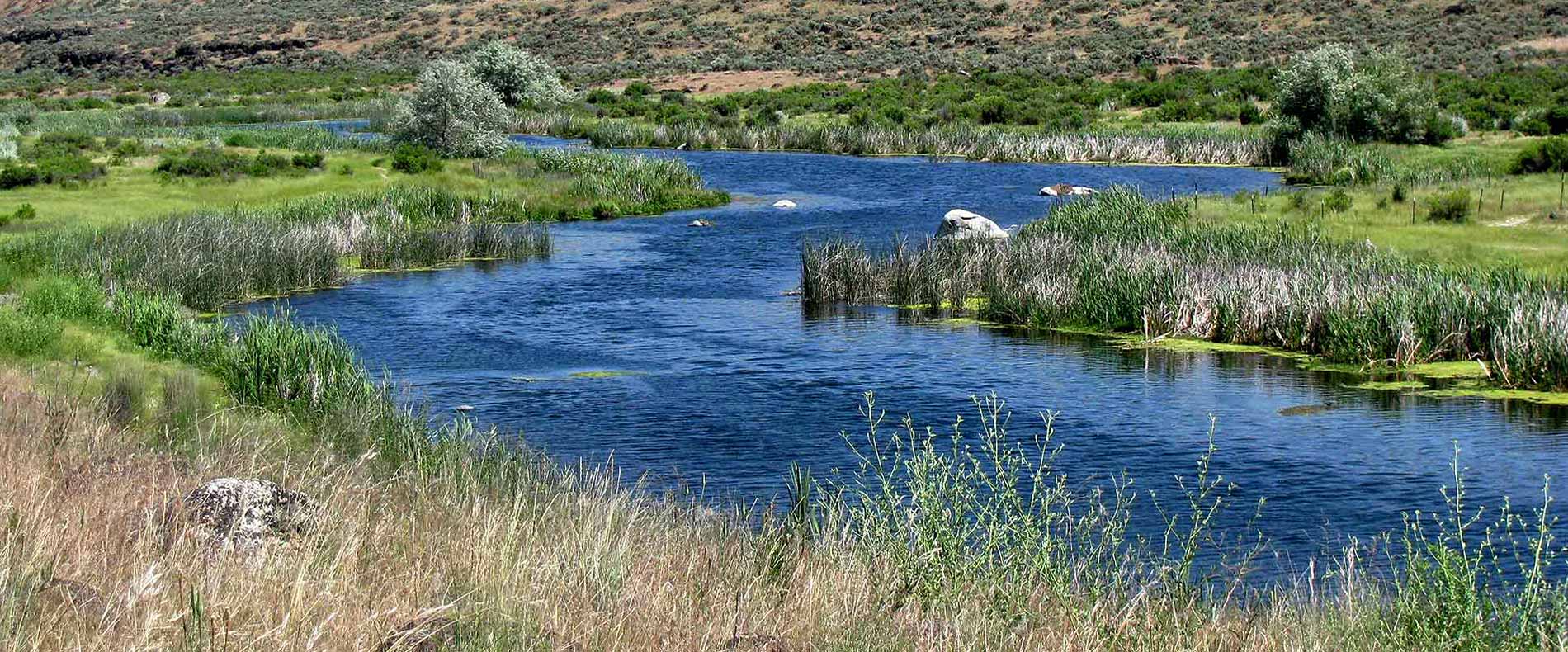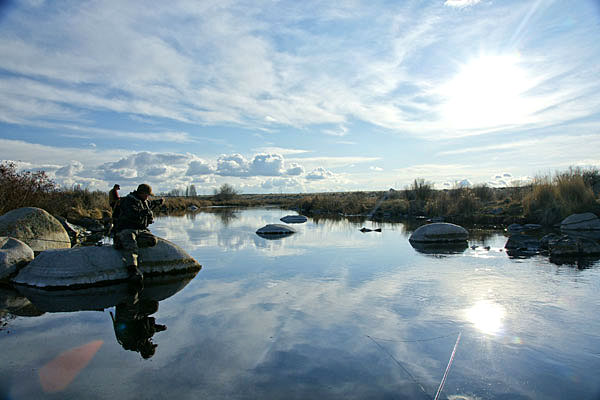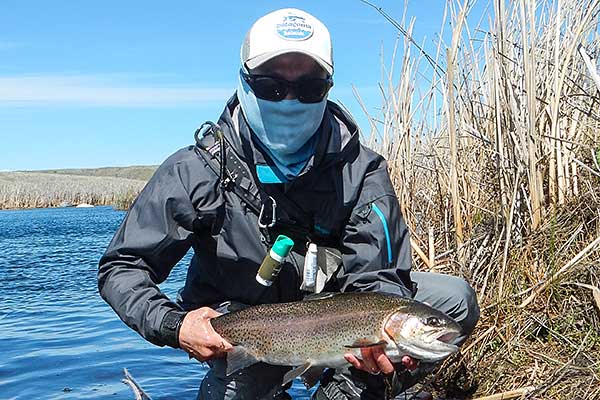

Unfortunately, low flows and Pelicans have had a negative impact on Rocky Ford over the last few years.
Rocky Ford Creek is one of the Pacific Northwest's premier spring creeks. Located near Ephrata, in Central Washington's Columbia Basin, Rocky Ford offers Washington's best stream fishing for large Rainbows. Since Rocky Ford is a spring creek, trout food is abundant, water temperatures remain pretty constant year around and trout remain active 365 days a year. Rocky Ford WDFW regulations: fly fishing only, catch and release, no wading, no floating devices, barbless and no lead.
Seasons
March and April: Scuds, Midges and Blue Winged Olives
May and June: Scuds, Midges, Sulfers, Callibaetis, Tricos, PMDs, Damsels, Caddis and Terrestrials.
July and August: Scuds, Midges, Callibaetis, Tricos, PMDs, Damsels, Caddis and Terrestrials.
September and October: Scuds, Midges, BWOs, Callibaetis, Damsels and Mahogany Duns.
November through February: Scuds, Midges and occasional BWOs.
Low water flows in the faster, freestone section below the lower hatchery diversion have significantly hurt the hatches in this stretch, this includes Sulfers, Tricos, BWOs, PMDs, Caddis and Mahogany Duns. Slow water Hatches above the diversion remain strong, this includes Callibaetis, Midges and Damsels.

The Ford is public water with easy access and lots of really large Rainbows. Spring and fall are typically the busiest seasons and you can expect to see quite a few other anglers, particularly on weekends. Crowds are generally lighter in the heat of the summer, but heavy growth of aquatic plants make it more difficult to fish. The fish are active in the winter and the creek is mostly weed free. The list of fishable waters in the winter is pretty small, so sunny weekends at the Ford can be busy.
When nymphing Rocky, don’t spend a lot of time working fish that you can see. If you can see the fish, they have probably already seen you. It’s difficult to pass up those 25 inch Rainbows, particularly when you can see them eating real bugs. It’s far more productive to work good water where you cannot see the fish. Sight fishing to nymphing fish can be very productive with good technique, just remember that these are very educated fish, once your are on their radar they are going to be very tough to fool.
Scuds are the dominant food source at Rocky year around, so good scud patterns in sizes 18 to 12 are essential. Nymphs and streamers will fool fish all year. The best dry fly fishing currently is the Callibaetis hatch in the slower sections May through September, BWOs in faster water spring and fall and Terrestrials and Damsel Flies in the summer. Midges can present challenging dry fly opportunities year around. It’s important when fishing Rocky Ford to walk softly and keep a low profile, keep casting at a minimum and have as much separation from the fish as is practical, avoid lining the fish and use appropriate leaders and slack line presentations. When nymphing, use a small white or olive yarn indicator. Bright or heavy indicators can spook the fish. Rocky is an hour and fifteen minute drive from Ellensburg.